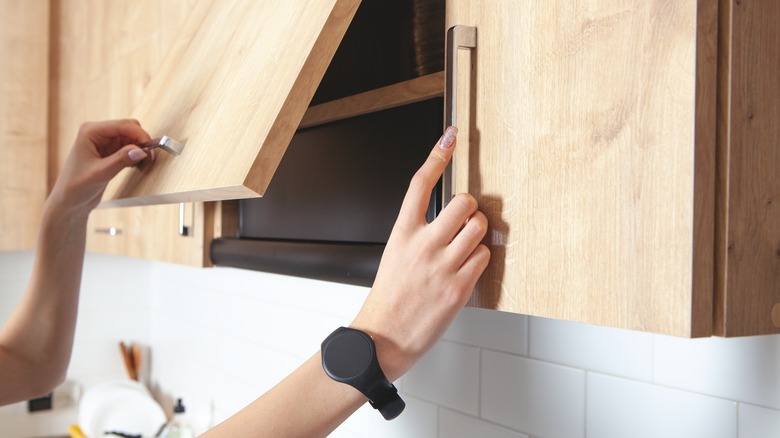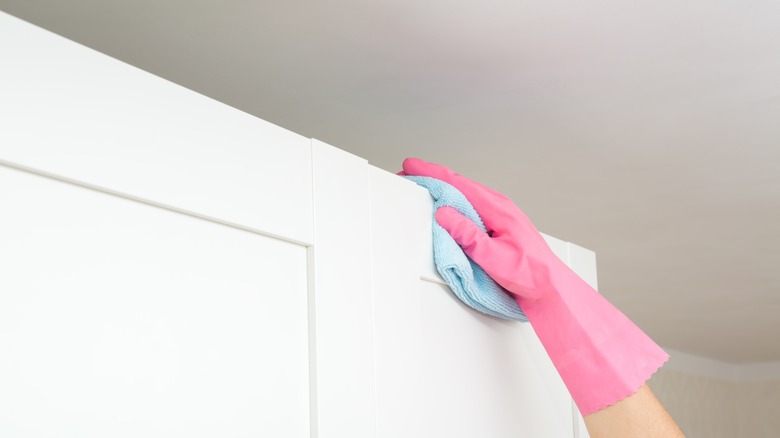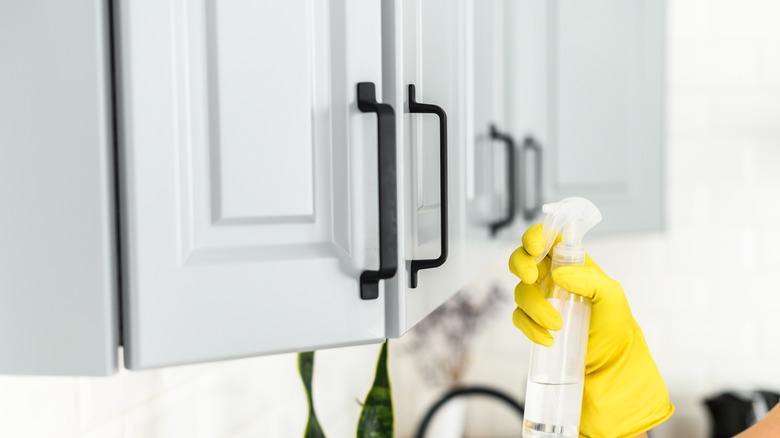How Often You Should Really Be Washing Your Kitchen Cabinets
Every so often, your kitchen needs a deep clean, where everything from your appliances to your counters gets the attention it deserves. However, in between these blitzes, some areas of your cooking space might actually go unnoticed or unattended, which means they are collecting dirt, dust, and even bacteria. One of the spots that might get overlooked for regular cleaning is the cabinets, and these are a prime destination for unwanted grease and other detritus to hang out.
Cabinets might get a wipe down here and there, however, despite being in prime eyesight, it can be easy to overlook them. The longer your cabinets go without a good wash, the more buildup they can get, and this can cause your kitchen to look grubby, have an unpleasant odor, or potentially invite pests into an area you definitely don't want them in. So how often do you need to give your kitchen cabinets some TLC?
Wash cabinets every one to three months
Everyone's kitchen cleaning routines are different, so while there is a general rule of thumb, cabinets might need more or less attention depending on your lifestyle. People who cook a lot might need to give them a good clean once a month, while lesser-used areas can go up to three months. However, it is ideal to make sure the cabinet doors are at least being wiped off once throughout the week. This will help keep buildup to a minimum and remove grease or stains that could otherwise harden and stick.
In terms of deep cleaning and washing the interior, the best practice is to scrub your kitchen cabinets every one to three months. Because these units have grooves and areas that catch food and dirt, it can be easy for the inside of the cabinetry to get dirty and remain that way. From far away, it might not look like there is dirt or detritus, but all these little spaces are notorious for holding build up.
The best way to clean your cabinets
The best way to wash your cabinets is to use gentle dishwashing soap. An important factor to keep in mind is the finish on your cabinets. Depending on the materials used, some washing methods will be more efficient than others. Moreover, it is important to make sure the finish is in good condition before attempting to scrub or wipe it. You can do this by using a fingernail to scratch an inconspicuous section. As long as the top coat or finish doesn't flake off, the wood is protected and you can proceed with the washing process.
When using dish soap, add a few drops to a bowl filled with warm water. Use it sparingly, or you might spend more time trying to get the soap off of the surfaces than actually cleaning them. In addition, avoid using water that is too hot, and test a section of wood first to ensure the soap doesn't have a negative effect.


